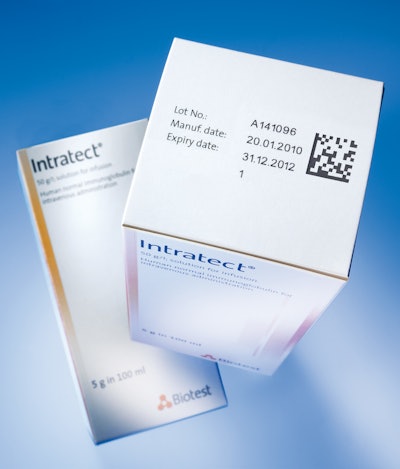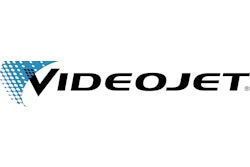
The pharmaceutical industry is no stranger to risk in the supply chain. Many manufacturers talk about visibility and risk management, but the truth is that much of the information companies collect to track products is not enough to manage risk. Tracking of pharmaceutical products has been identified as the only way to effectively improve security and combat counterfeiting.
While many manufacturers have adopted serialization by marking and coding products with identifiers to help trace pharmaceutical products, there are still many who are only using enterprise systems and warehouse management systems to monitor the products. The problem is that these types of systems can span multiple days of production and are not capable of giving finite visibility, which would ultimately help in targeted recalls and counterfeiting.
Why serialization?
The current challenge is to better collect, track, and trace products and information that pass through pharmaceutical supply chains. Manufacturers are constantly on the lookout for new technologies that have the most accurate and advanced track-and-trace capabilities to help them respond quickly to rising problems. Serialization is the answer for many and has been identified by the U.S. Food & Drug Administration (FDA) as the best solution available to keep counterfeiting at bay and recalls at a minimum.
Serialization, also referred to as mass serialization, is the process of assigning and marking each product or product component with unique identifiers. This is usually done during the manufacturing process through the use of various combinations of readable technologies. Serialization is designed to improve traceability and provides manufacturers with the data they need to respond to security issues.
A serialization code can be as deep and detailed as a customer requires and can include the manufacturer’s Global Trade Identification Number (GTIN), product or drug description, stock-keeping unit (SKU), lot or batch number, expiration date, date of production, and line and plant in which it was manufactured. Many serialization solutions also offer flexibility built into the code structure with application identifiers (Als). The GS1 standard, a system of global standards, has defined AIs in a way that allows for a significant amount of information to be included in the code.
Serialization adoption
Currently, 50% or more of the pharmaceutical industry is already addressing serialization with coding and marking technology implemented in the manufacturing process. Many have done their due diligence to find the best marking and coding solution provider with minimal investment and minimal-to-no impact on production throughput. However, many small pharmaceutical companies and co-packers still haven’t implemented any serialization solutions.
Currently, only California has state-wide serialization requirements through their pending e-pedigree law. This law will require wholesalers and pharmacies to provide an e-pedigree, which is an electronic record containing information with data elements about the drug, and information regarding each transaction resulting in a change in ownership of the given prescription drug. No wholesaler or pharmacy may sell, trade, or transfer a prescription drug without providing this e-pedigree. Florida is in the process of implementing similar requirements, but it is expected the FDA will enforce what California has proposed and enact a nationwide law.
The California law is insisting that 50% of products be marked for serialization by 2015. The other 50% will need to have serialization coding by 2016. Wholesalers and re-packagers must also accept and forward products with the e-pedigrees by July 2016 so pharmacies and pharmacy warehouses can accept and pass e-pedigrees by July 20171.
The biggest issue with serialization adoption by pharmaceutical manufacturers is the infrastructure required to support it. Serialized codes need to be managed throughout the entire supply chain from manufacture to distribution, and ultimately scanned at the point of dispensing. After the code is scanned at the point of sale, the information is sent to an interoperable management site, a system that electronically manages all the e-pedigree transaction information. This becomes a big undertaking for manufacturers and supply chain partners not only because of the ample amount of information that needs to be managed and the impact on the production and throughput processes, but also because the costs associated with implementation and management of such a system can be substantial. Customers are unaware of the financial benefits of implementing a serialization solution and, therefore, find it hard to make an investment in something that is still evolving.
The benefits of serialization
A serialization investment can deliver numerous benefits for manufacturers. Beyond compliance with the federal government, serialization helps protect consumer safety through proper labeling management of packaging processes. This can help protect brand reputation by increasing patient safety.
With serialization, manufacturers can capture necessary information while a product moves through the supply chain. This enables them to improve efficiency, control costs, and increase shipping accuracy, ensuring recall integrity. When a company has an understanding of the supply chain process, it can more easily control inventory and drive better understanding of the impact of disruptions.
Additionally, serialization helps companies minimize chargebacks associated with packaging errors and claims against pharmaceutical manufacturers. Manufacturers can control pricing and how chargebacks are executed, thereby eliminating duplicate chargebacks and improving pricing accuracy.
However, the most important benefit of serialization is its impact on counterfeiting. Counterfeiting is challenging to fight because advanced technologies allow counterfeiters to quickly duplicate drug types. They can manufacture a significant amount of product under the one valid code. According to the World Health Organization, an estimated 10 to 15% of the world’s drug supply is counterfeit, and billions of dollars are lost each year as a result. With counterfeiting having such a profound effect on the bottom line, many companies agree that it can only be addressed through multiple layers of security including specialty closure devices on packaging, security tapes, specialty inks, forensic materials in packaging, smart codes, and other dynamic variables to verify authenticity. Yet, serialization is the main key to transparency along the supply chain, enabling true track-and-trace capabilities. Serialization makes it difficult for counterfeiters to duplicate valid codes and can minimize risk to consumers and improve consumer safety.
Flexibility in a partner
To succeed in serialization implementation, manufacturers should work with flexible marking and coding partners that understand the company’s packaging environment and can customize a solution to fit. A serialization solution is never “one-size-fits-all” because every company’s manufacturing lines are different. Exception handling, production requirements, and data capture should be factors in determining the best solution fit. The right marking and coding partners will offer track-and-trace capabilities and software components designed to address requirements for the pharmaceutical industry, and can customize the offering for virtually each track-and-trace project addressed. Additionally, it is beneficial to identify marking and coding partners that have the capability to manage the entire packaging/process and keep track of the data across the supply chain.
What’s next?
While the pharmaceutical industry is moving toward complete serialization of products, many in the industry believe it won’t stop there. In some cases, serialized codes are already being added to medical devices and implantable products. Regardless of where serialization is headed, it has its benefits for manufacturers both now and in the future. Companies who don’t begin to look into a serialization solution will inevitably fall behind the curve. Any high-value product or brand can be a target for counterfeiters, and consumers are ultimately at risk. Being proactive about serialization will give companies an advantage to leverage the many benefits of actionable data. When serialization requirements sweep across the country, those companies who took the proper steps toward implementing the right solution will be prepared to comply.
Article provided by Jim Kerper, Videojet Systems Solutions Manager, Videojet
Department of Consumer Affairs, California State Board of Pharmacy

























